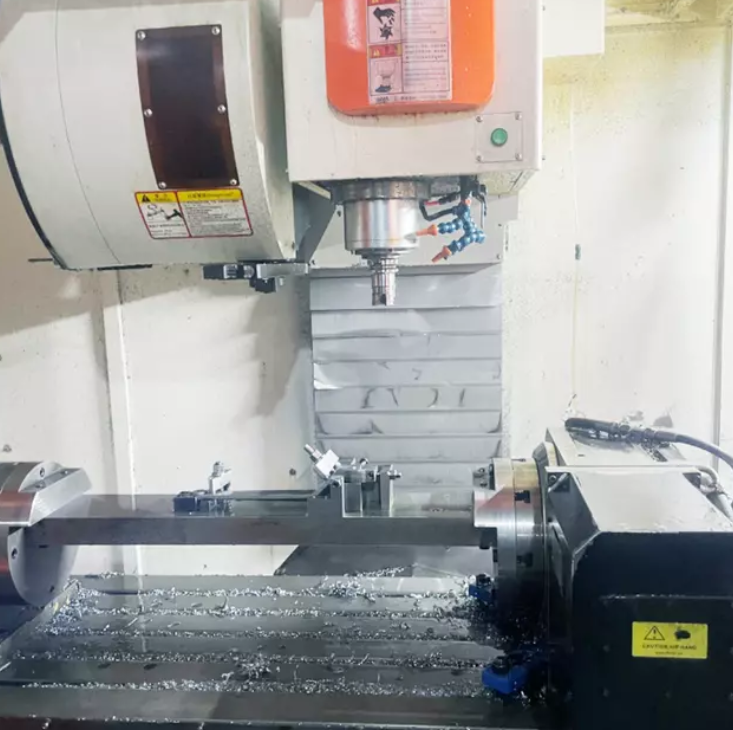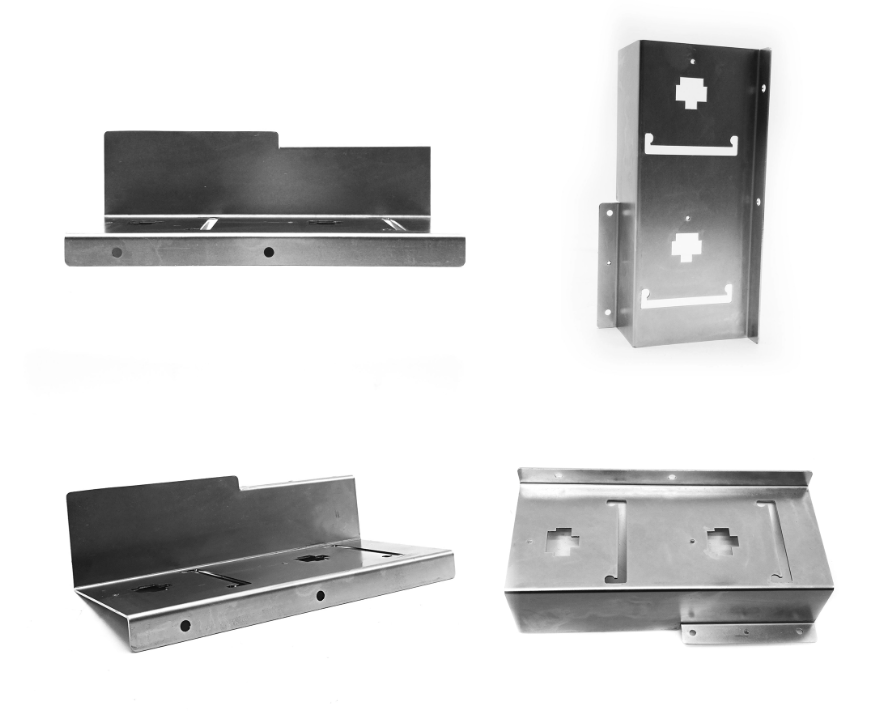Views: 0 Author: Site Editor Publish Time: 2025-06-17 Origin: Site









Sheet metal fabrication is at the heart of modern manufacturing. From automotive to aerospace, it shapes the products we use every day. In this post, you'll learn about the essential processes: cutting, forming, joining, and finishing. We'll guide you step by step through the fabrication process.
Sheet metal fabrication is the process of turning flat metal sheets into parts and structures through cutting, bending, welding, and other methods. It involves metals like steel, aluminum, copper, and alloys, each chosen for their unique properties. Steel is strong, aluminum is lightweight and resistant to corrosion, copper is conductive, and alloys offer specific advantages for certain applications.
This process is used in various industries such as aerospace, automotive, construction, and consumer products. It creates components like vehicle parts, enclosures, panels, frames, brackets, and even decorative elements.
Sheet metal cutting involves several methods: waterjet, laser, plasma, and mechanical cutting. Waterjet cutting uses high-pressure water to cut metal without heat, offering precision, but is slower for thicker materials. Laser cutting provides high accuracy for intricate designs, especially with thin materials, but struggles when cutting thicker sheets. Plasma cutting is faster than laser cutting for thick metals but may require post-processing to smooth out edges. Mechanical cutting is simpler and often used for basic cuts, though it lacks the precision of the other methods. The choice of cutting technique depends on the material, thickness, and complexity of the design. Tools like CNC machines, manual shears, and sawing machines are commonly used, each suitable for specific cutting tasks. CNC machines provide precision and are ideal for complex shapes, while manual shears and saws are better suited for simpler, more straightforward cuts.

Forming sheet metal involves shaping it through bending, stretching, and stamping. Bending is commonly done using a press brake, where metal is bent at specific angles for precise shapes. Stamping presses a die onto the metal to form complex shapes, often used in mass production. Deep drawing transforms flat sheets into hollow shapes like containers or cans by stretching the metal over a die. Factors like material thickness, bend radius, and the K-factor (a ratio influencing how much material will stretch) impact the precision and quality of the final part. These elements must be considered carefully to ensure the metal maintains its strength and shape after being formed. The bend radius, for example, needs to be calculated based on the material type and thickness to avoid damage during the bending process.
Joining sheet metal parts involves several methods, including welding, brazing, soldering, and fastening. Welding methods such as MIG, TIG, and spot welding are used to join metal parts together. MIG welding is fast and versatile, TIG welding is highly precise, and spot welding is ideal for joining thin sheets of metal. Brazing and soldering use lower temperatures to join metals, without melting the base material, making them suitable for sensitive applications or when parts must remain undamaged. Fastening uses screws, bolts, nuts, and rivets to join metal parts, especially when disassembly may be needed later. The selection of the appropriate joining method depends on the strength requirements, heat sensitivity, and whether future disassembly is necessary. For example, welding creates strong, permanent joints, while fastening allows for easy disassembly.
Post-processing enhances the quality, appearance, and durability of sheet metal parts after fabrication. Heat treatment processes, such as annealing, tempering, and hardening, improve the strength, flexibility, and overall material properties of the metal. Surface finishing methods, including bead blasting, powder coating, anodizing, and electroplating, add aesthetic appeal and protection against corrosion. Polishing is another post-processing step that provides a smooth, shiny finish, which is commonly used for decorative applications or to improve the surface quality of functional parts. These post-processing techniques ensure that the final product meets both functional and aesthetic requirements, offering durability and visual appeal.
Sheet metal fabrication uses various metals, each chosen for specific properties. Aluminum is lightweight, corrosion-resistant, and easy to form, making it ideal for aerospace, automotive, and consumer electronics. Stainless steel offers high strength and excellent corrosion resistance, commonly used in food processing, medical equipment, and architectural applications. Mild steel, while cost-effective and easy to work with, is less resistant to corrosion, making it popular in general manufacturing, automotive, and construction. Copper and other alloys provide high thermal and electrical conductivity, as well as corrosion resistance, making them suitable for electrical components, plumbing, and heat exchangers.
When selecting a material for sheet metal fabrication, consider factors such as strength, weight, corrosion resistance, and budget. Your choice will influence the fabrication processes, including cutting, forming, and finishing methods, which can affect both the quality and cost of the final product.
When designing for sheet metal fabrication, several key factors must be considered to ensure efficient production and quality parts.
● Uniform Wall Thickness
Ensuring uniform wall thickness is essential for consistent bending and forming. Variations in thickness can lead to uneven bends, weak points, and increased stress during fabrication.
● Tolerance and Dimensions
Accurate dimensions are crucial in sheet metal fabrication. Even slight errors can lead to misalignment or difficulty in assembling parts. Handling tolerances is vital, as slight adjustments during the design phase can save time and costs during production.
● Bend Radius and K-factor
The bend radius and K-factor are essential for accurate sheet metal parts. The bend radius refers to the inside radius of the bend, and the K-factor helps determine how much material will elongate during the bending process. Both factors are key to preventing material failure and ensuring precise dimensions.
● Part Design and Manufacturing Feasibility
It's important to design parts that are feasible for fabrication. Consider material properties, the capabilities of available tools, and the complexity of the design. Ensuring the design can be fabricated within these constraints reduces production time and costs.

In sheet metal fabrication, issues like gear slippage, misalignment, and unusual noise are common. Gear slippage often occurs when the gear is not tightly secured or aligned properly. Check the fit and ensure it's tightened correctly. Misalignment is another frequent issue, which can result in poor quality and improper functioning. Be sure all parts are aligned before starting the process. If you hear grinding or squeaking, it usually indicates misalignment or lack of lubrication. In these cases, lubricate the parts and verify the alignment for smoother operation.
Warping and distortion can arise from uneven heating or cooling during the fabrication process. Heat treatment, like annealing or tempering, helps relieve internal stresses in the metal, reducing distortion. After fabrication, post-processing techniques such as straightening and surface grinding can fix any warping. These methods help ensure the final part maintains its desired shape and quality, minimizing potential issues in the end product.
Sheet metal fabrication is essential in aerospace and automotive industries for creating lightweight, durable components. In aerospace, metals like aluminum are used to make parts such as fuselages, wings, and engine components. These materials help reduce weight, improving fuel efficiency without compromising strength. In the automotive industry, sheet metal is used to manufacture body panels, chassis, and frames. The material’s ability to be easily shaped and welded makes it perfect for creating complex parts that need to withstand significant stress.
Sheet metal is widely used in construction and architecture for creating building materials like roofing, cladding, and structural components. Metals such as steel and aluminum are often used for roofing and cladding, providing both aesthetic appeal and durability against the elements. Sheet metal is also critical for creating structural elements like beams, columns, and support structures, offering strength and stability for buildings and infrastructure.
In consumer goods and electronics, sheet metal fabrication is used to create a variety of products. For example, phone cases made from aluminum or stainless steel provide lightweight yet strong protection for devices. Sheet metal is also used in kitchenware, including pots, pans, and utensils, due to its ability to withstand heat. Additionally, sheet metal is essential for producing appliances like refrigerators, microwaves, and washing machines, ensuring both durability and attractive design.
Sheet metal fabrication involves key processes like cutting, forming, joining, and finishing. Understanding these techniques improves your project quality and efficiency. As you start your fabrication journey, explore additional resources or consult experts to enhance your skills and ensure successful outcomes. For more information, reach out to Sollwin, specialists in sheet metal fabrication to explore how it can benefit your operations.
A: Laser cutting and mechanical cutting are great starting points due to their accuracy and ease of use.
A: The main challenges are ensuring material compatibility, managing heat-related distortions, and achieving precise dimensions.
A: Use appropriate post-processing techniques like powder coating or anodizing to enhance durability and corrosion resistance.
A: Mild steel is often the most cost-effective option, offering a good balance between strength and price.
